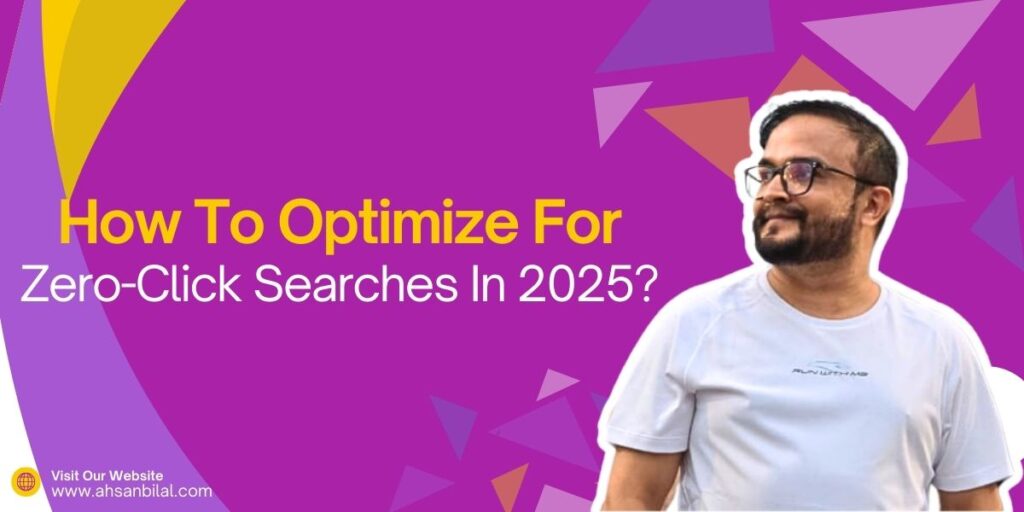The SEO landscape is evolving rapidly, and one of the most significant changes in recent years is the rise of zero-click searches. These occur when users get their desired answers directly on the search engine results page (SERP) without clicking on any link. With Google and other search engines prioritizing user convenience, zero-click searches have become a powerful opportunity for businesses to build visibility, authority, and engagement. In this article, we’ll explore actionable strategies to optimize for zero-click searches in 2025.
Understanding Zero-Click Searches
A zero-click search happens when users find the information they need without leaving the search results. These are commonly presented as:
- Featured Snippets
- Knowledge Panels
- People Also Ask (PAA) Sections
- Local Packs (Maps)
- Quick Answers
While zero-click searches may reduce website traffic, they enhance brand visibility and user trust—key elements for long-term success in SEO.
Focus on Featured Snippets
Featured snippets are concise answers pulled directly from a webpage, displayed at the top of the SERP in what’s often called “Position Zero.”
How to Optimize for Featured Snippets:
- Answer Questions Clearly: Structure your content in a way that directly answers common questions related to your niche.
- Use Headers Effectively: Use H2 or H3 tags for questions and provide concise answers below them.
- Incorporate Lists and Tables: Format information as bullet points, numbered lists, or tables when appropriate.
- Target Long-Tail Keywords: Long-tail keywords often align with user queries that generate snippets.
For example, if you’re in the fitness industry, optimize a post to answer, “What is the best exercise for weight loss?” in 40-60 words.
Create Content for the ‘People Also Ask’ Section
The PAA section provides additional questions and answers related to the user’s query. Each expanded question leads to new results, so optimizing for PAA can increase your visibility.
How to Optimize for PAA:
- Conduct Question-Based Keyword Research: Tools like AnswerThePublic and Google’s autocomplete suggestions can help identify relevant questions.
- Write Comprehensive Content: Include multiple FAQs in your blog posts and provide accurate, concise answers.
- Address Multiple Angles: Cover different variations of user queries to increase your chances of appearing in PAA sections.
Leverage Structured Data Markup
Organized information, otherwise called diagram markup, assists web search tools with grasping your substance better. This is a critical component for optimizing zero-click search features like rich snippets, FAQs, and local packs.
Types of Schema to Use:
- FAQ Schema: Mark up your FAQ section to make it eligible for rich results.
- How-To Schema: Ideal for step-by-step guides.
- Local Business Schema: Optimize your Google My Business profile and add schema to provide information like address, phone number, and reviews.
- Video Schema: Use for video content to appear in carousels or rich snippets.
Implementing schema markup ensures your content is not only crawlable but also primed to appear in enhanced search features.
Prioritize Local SEO for Map Packs
If your business operates locally, appearing in the local pack is essential for zero-click optimization. The local pack showcases the top three businesses based on the user’s location, along with essential details like address, contact info, and reviews.
How to Optimize for Local Packs:
- Claim and Optimize Google My Business (GMB): Ensure your GMB listing is accurate and up to date.
- Encourage Customer Reviews: Positive reviews boost your local SEO rankings.
- Add Location-Specific Keywords: Incorporate local keywords in your website’s meta descriptions, titles, and content.
- Use Local Schema Markup: Make your location data clear to search engines.
Optimize for Visual and Voice Search
Visual and voice search are growing trends, and both play a role in zero-click searches. With users increasingly relying on voice assistants and visual search tools, you need to tailor your strategy accordingly.
For Visual Search Optimization:
- Use high-quality images and optimize them with descriptive file names, alt text, and captions.
- Ensure your images are mobile-friendly and load quickly.
For Voice Search Optimization:
- F Center around conversational catchphrases and normal language questions.
- Optimize for questions starting with “how,” “what,” “why,” and “where.”
- Provide clear, concise answers that can easily be read aloud by voice assistants.
Develop Evergreen, Authoritative Content
Creating content that remains relevant over time is key to zero-click search optimization. Evergreen content positions your site as a reliable source of information that search engines can feature repeatedly.
How to Make Your Content Evergreen:
- Address timeless topics rather than fleeting trends.
- Update content periodically to ensure accuracy.
- Back your claims with authoritative sources and data.
Monitor Performance and Adapt
The SEO landscape is dynamic, and zero-click search strategies require continuous monitoring and adjustment.
Tools to Track Zero-Click Performance:
- Google Search Console: Monitor impressions, clicks, and ranking positions.
- SEMRush or Ahrefs: Analyze keyword performance and snippet appearances.
- Schema Markup Validator: Ensure your structured data is error-free.
Conclusion
In 2025, zero-click searches will continue to reshape the SEO ecosystem. While they might limit direct website traffic, they offer unparalleled opportunities to establish your brand as an authoritative source in your niche. By optimizing for featured snippets, PAA sections, structured data, local packs, and emerging technologies like voice and visual search, you can ensure your content remains visible and relevant in the evolving digital landscape.
Start implementing these strategies today, and position yourself for success in a zero-click search-dominated world!
